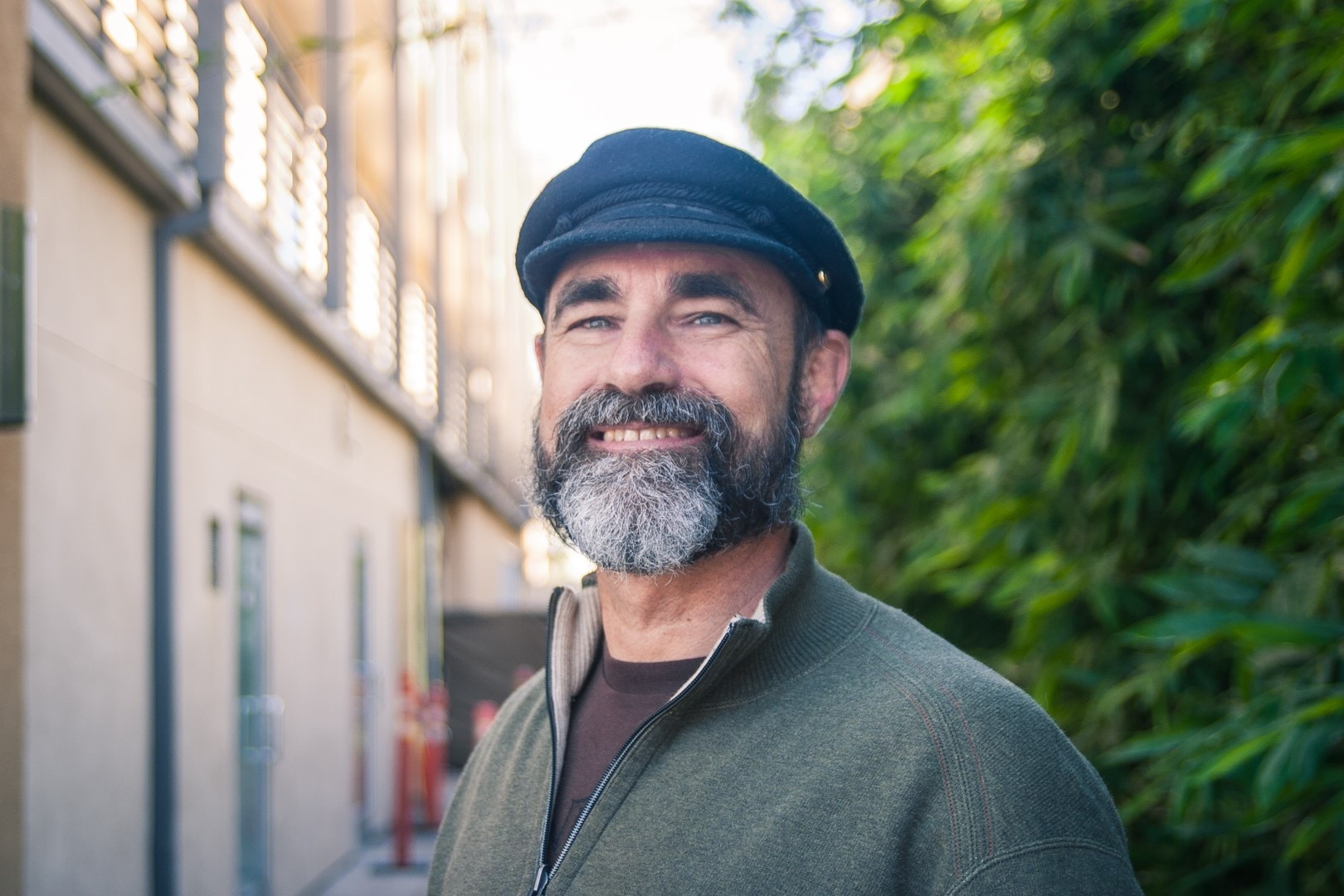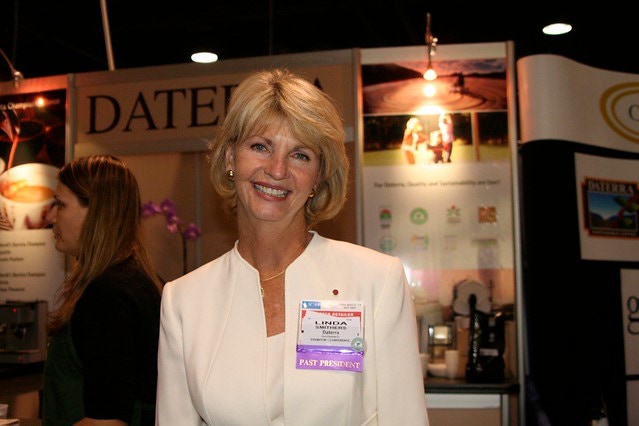
With this extensive and meaningful track record at origin, it’s no surprise that Linda’s new role is focused squarely on coffee producers. She was elected earlier year as the new Board Chair of Grounds for Health, a nonprofit organization that works to prevent cervical cancer in coffee-growing regions.
For decades, Linda has worked with producers mostly in a business sense – specifically, to elevate their farming practices and coffee quality. But now, Linda is leading an organization that supports the producers themselves by providing access to life-saving medical services. Since 1999, Grounds for Health has screened 114,833 women for cervical cancer and has treated 9,355.
Linda's Mission at Grounds for Health
Linda was elected to the board of Grounds for Health in 2009, but much has changed since she joined the organization. Back then, Grounds for Health was operating in countries mostly in Central America and executing direct campaigns, in which the organization sent its own healthcare professionals from the United States to conduct cancer screenings.
“There’s no reason low resource areas ever have to go without care,” Linda said. “This program can now be duplicated anywhere in the world. We are doing magnificent work. We’ve really got it now.”
As the Board Chair, Linda’s goals for the organization could be perceived as more evocative of a corporate CEO than a nonprofit leader. She would like Grounds for Health to be less reliant on philanthropy and explore ideas for a product or service that the organization can sell to become somewhat self-sustaining. She wants to more shrewdly invest their funds while still growing the donor base. And she is determined to expand the organization’s footprint, providing trainings to medical professionals in more countries and looking outside the coffee industry for fundraising.
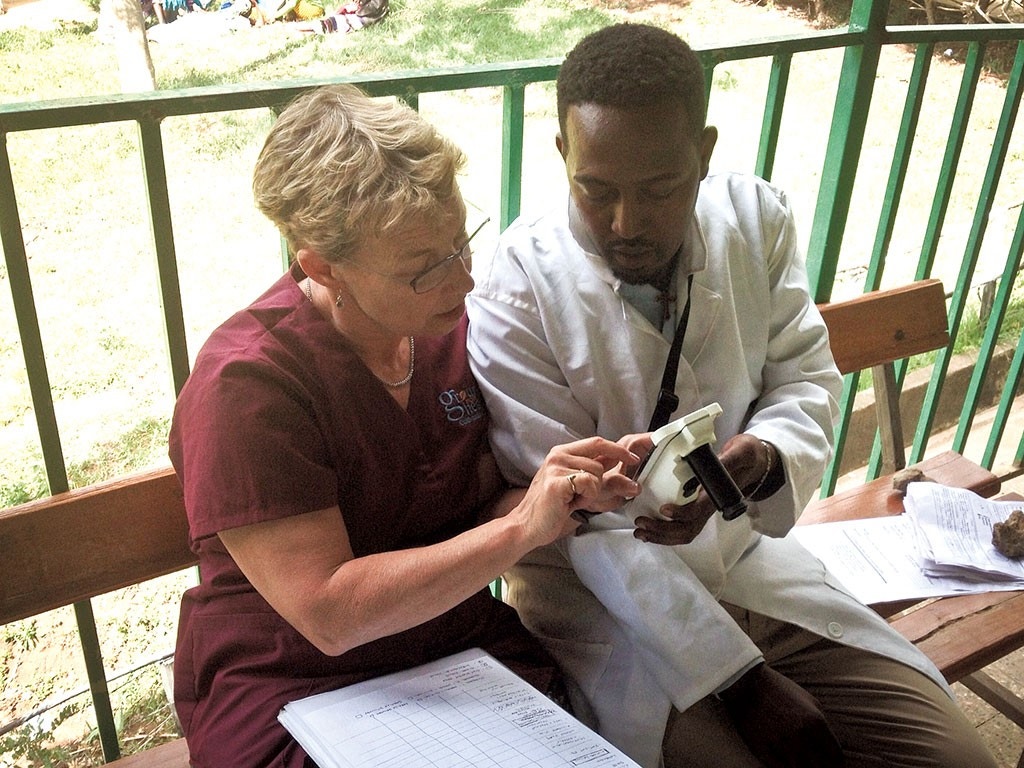
Only when Linda and Ted sold off most of these businesses and planned to retire did Linda’s coffee journey begin. The couple initially thought they would enjoy their golden years in relative calm, and moved to Palm Beach, Florida. But in their search for the best waffle in town, they stumbled upon a little coffee shop called the Coffee Connection, an act that would change Linda’s life trajectory for the next 30 years.
Entering the Coffee Industry and the first SCAA Expo
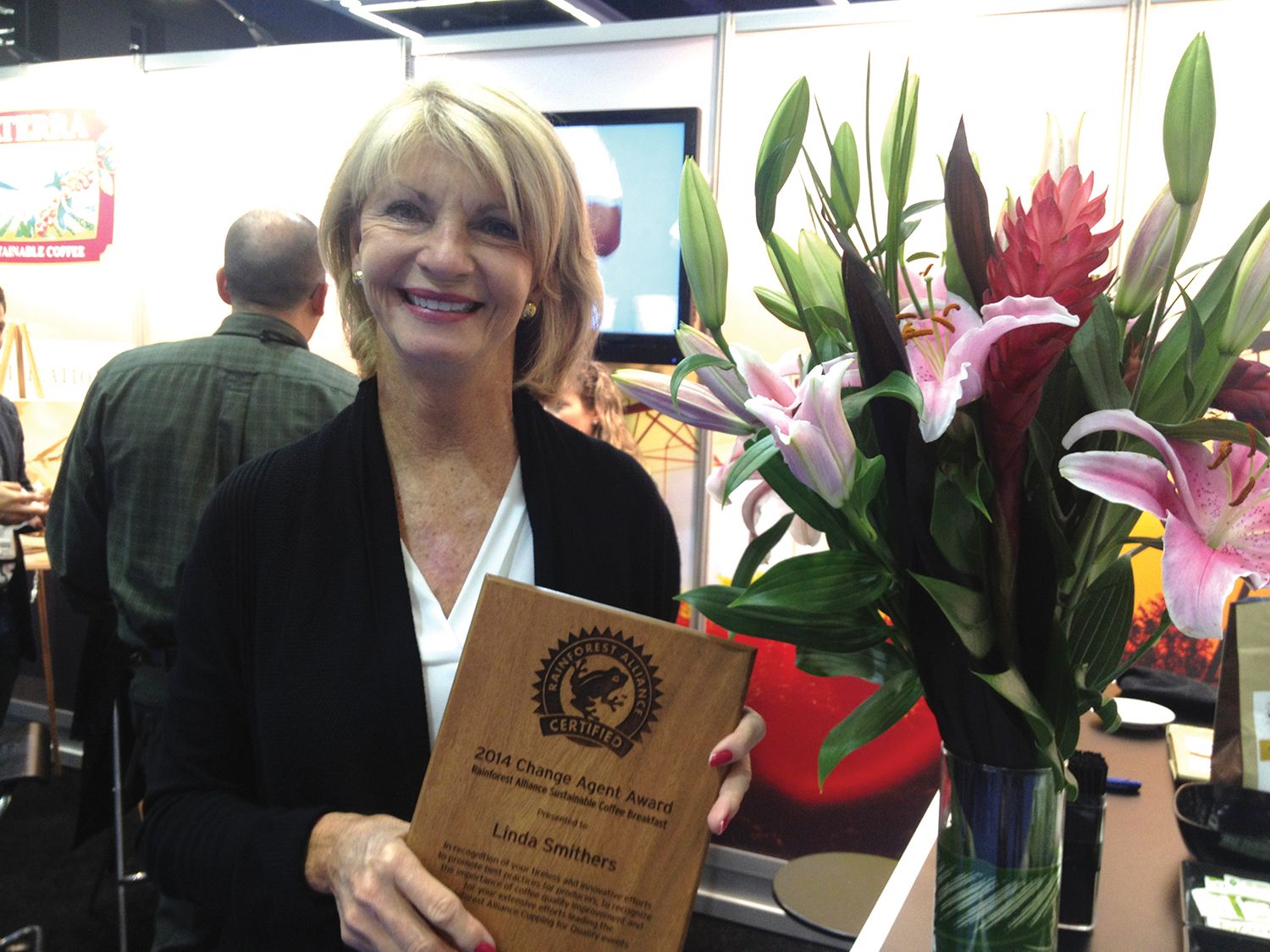
But even if Linda didn’t know good coffee from sludge, she was drawn to the coffee shop experience, and the comforting ambiance of the Coffee Connection (not affiliated with George Howell). She and Ted felt so at home at the shop that they tried to buy the Coffee Connection franchise. But toward the end of the negotiating process, the owners of the Coffee Connection backed out of the sale.
Even without any substantial coffee experience, The Smithers were sorely disappointed with the outcome. They were both excited by the prospect of a new adventure, not quite ready to live a life of sunbathing and golfing in the Sunshine State. But still fascinated by coffee shop environments, they continued to visit different coffee shops. They began to learn more about coffee itself. And in their research, they caught wind of an upcoming meeting about coffee taking place in New Orleans, which they signed up for. This meeting turned out to be the first official Specialty Coffee Expo.
If the modern-day SCA Expo is a must-attend industry spectacle, the inaugural edition was a blip on the radar. There were about 40 or 50 attendees in total, who Linda recalled being mostly roasters and “true coffee people”. Here, Linda discovered that specialty coffee could be a controversial industry: everyone seemed to have an adamant opinion, an idea put on full display when there was nearly a full-blown brawl at a class on coffee flavoring. But by the end of the Expo, they had fully caught the coffee bug. They left New Orleans owning a Diedrich coffee roaster and a La Pavoni espresso machine.
Susan's Coffee & Tea
After the narrow miss of landing the deal with the Coffee Connection, Linda and Ted now had the motivation and the means to build a coffee experience of their own. They had the proper coffee equipment, and together, they accumulated decades worth of knowledge in business. And most importantly, they had vision. Linda wanted to model the shop, named Susan’s Coffee & Tea in remembrance of their late daughter, after her and Ted’s favorite bar in Denmark. Even thousands of miles away from northwest Ohio, the bar always felt like home, something she wanted to impart on her customers.
“We wanted people to have a place where they took a respite from everything,” Linda said. “Any pressure of their day. They could come home, sit down and have a delicious cup of coffee.”
But Linda and Ted admittedly still didn’t have the robust coffee knowledge necessary to launch a coffee business. So the couple decided to educate themselves by experiencing coffee at its roots. They embarked on an origin trip to Guatemala with the SCAA, the first of many for Linda, where they received a whirlwind crash-course in coffee. They cupped coffees, learned about varietals, and met people who became outsized influences on the coffee industry, including Mary Williams, an SCAA Lifetime Achievement Award recipient and Starbucks executive who started the company’s coffee education program in the 1990s.
It was this origin trip that was the catalyst for one of the most important programs at Susan’s. After three years of operating a handful of shop locations, Linda calculated that they could make the biggest impact on their bottom line by improving their sales of beans, a potentially high-profit and high-engagement opportunity. And if she was able to increase whole bean coffee in her stores, it would also create a return of value for the roaster and the producer.
In the 1990s, direct farm connections were more the exception than the norm. But Linda saw the benefit in promoting the work and quality of coffee producers, and she did so through public education courses at Susan’s. She offered in-depth origin classes at her shops, where customers would cup and discuss coffees from different origins. Linda would even connect customers with the farmers directly – on multiple occasions, she would invite producers from Puerto Rico to travel to her shops to give in-person classes on the coffee from their farms.
Another approach that Linda took to increase bean sales was to create a system of coffee origin engagement within her staff. She would assign different coffee growing regions to her staff members, and they were responsible for training their fellow colleagues in that region. And with a clever motivational tactic, Linda attached a financial incentive to this system - for all the coffee that the staff member sold from their region that month, they would earn a bonus.
These programs weren’t just financial boon for her staff – they helped Susan’s increase its sales of coffee beans by 10 times.
Champion of Producers at the Specialty Coffee Association of America
Linda continued to grow Susan’s throughout the 1990s, and at its peak, there were 19 locations of the chain throughout Ohio. But, at the same time, she was becoming more involved with the Specialty Coffee Association of America, developing education programs in collaboration with former SCAA President Ted Lingle to make coffee knowledge more accessible. And in 1998, it was her turn to take up the post as the President of the organization.
“If coffee farmers only see people making $12 a pound off their coffee, and they’re getting paid 96 cents per pound, talk about a ladder with no rungs,” Linda said. “We have to bring the producer into the fold. Without them, we don’t have any coffee.”
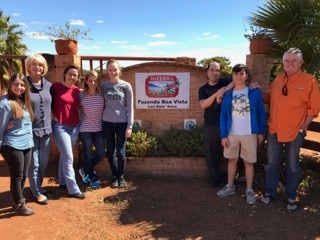
But Linda doesn’t think the C-price of coffee is the end-all-be-all of coffee farmers. She said most specialty coffee roasters and retailers are paying well above the commodity market price. Not simply because they feel a sense of morality to pay more, but because farmers are differentiating themselves by the quality of their coffee and understand the worth of their product.
“People are willing to pay the price that’s commensurate with the quality of the product,” Linda said. “We have begun, we’re not there completely, and have made great headway in attaching price and quality to determine the value.”
Working at Origin with Daterra and Cupping for Quality
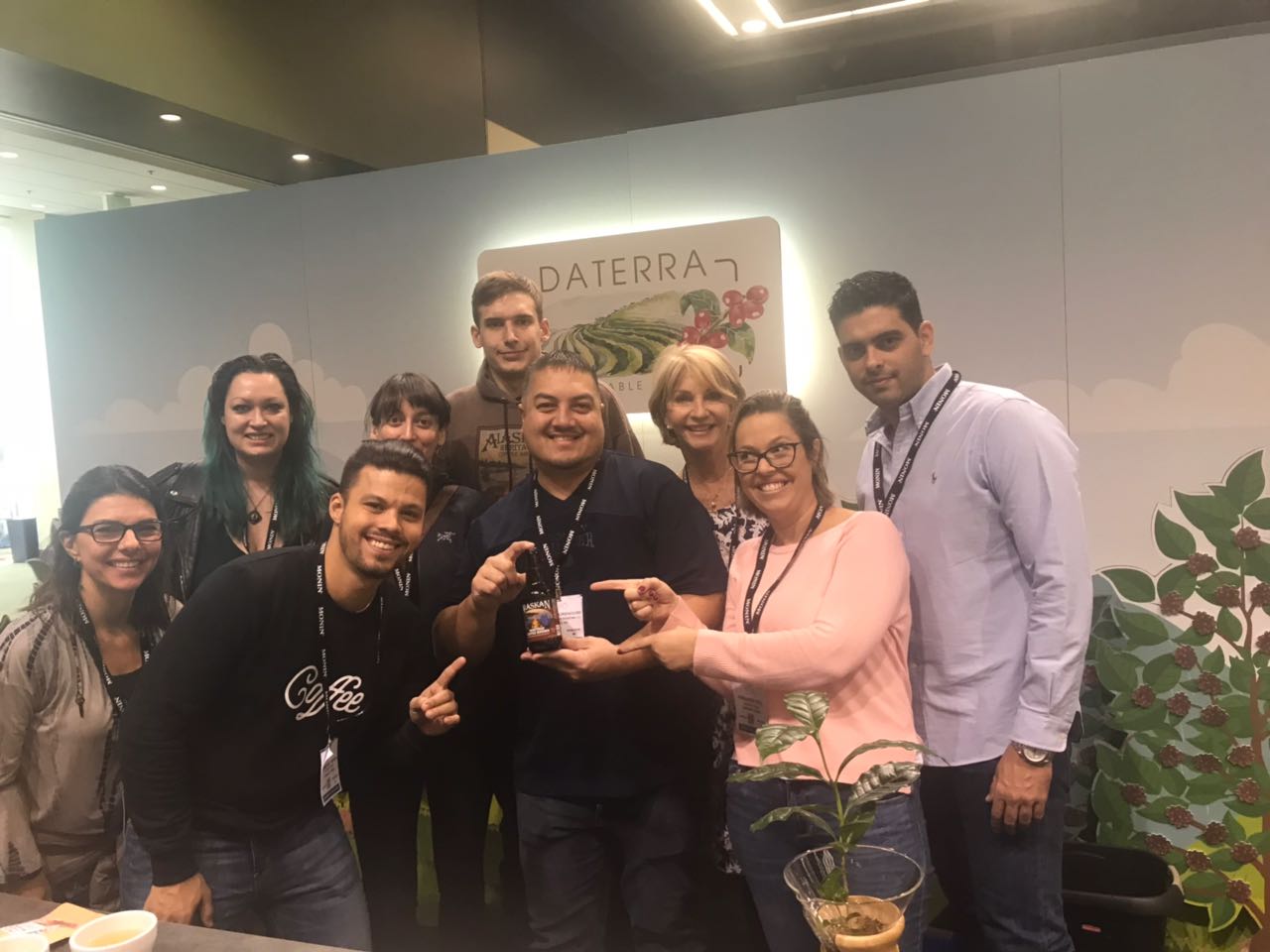
Along with Daterra’s president, Luis Pasqual, Linda was able to differentiate the farm with a concept she calls “stratification of menu.” All coffee farms produce both specialty and commercial grade coffee, but it was Linda’s and Luis’s conscious decision to build tiers of quality and taste of coffee to provide a full range of offerings, and to justify pricing for each tier. Meaning that Daterra actively identified and nurtured its highest potential coffees, the farm’s gems that Linda calls “original pieces of art”, but also properly cares for all tiers of their coffees to build into their menus.
Daterra divides its farm into three distinct offerings: Classics, which are from the larger-volume part of the farm that score 80 to 86; Collections, which are coffees from the current menu and score 86 to 89; and Masterpieces, the small coffee lots within Daterra which are used for new and unusual varietals, experimental processing methods and drying techniques, and that yield exceptionally unique coffees that score 88+.
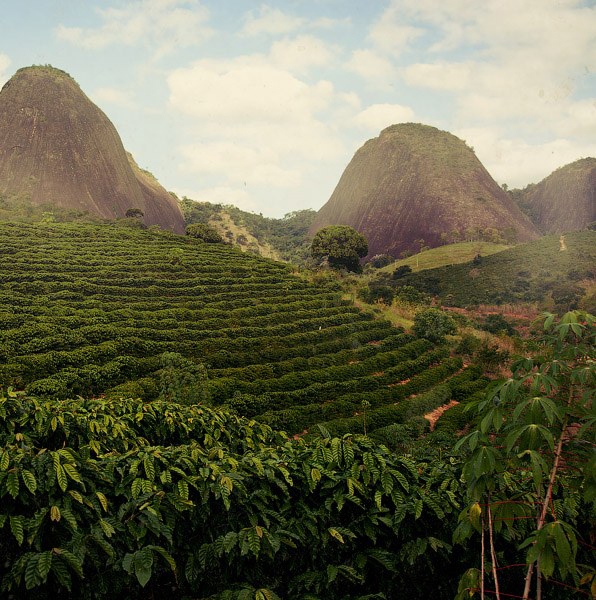
It’s Linda’s excellence in cupping that led to another one of her vital initiatives to help coffee farmers improve their coffee and practices. In 2003, she helped to launch the Rainforest Alliance Cupping for Quality Program, which was developed to link sustainable farming practices and coffee quality. Linda would recruit industry professionals to donate their time to conduct cuppings (and often acted as leader cupper herself) from coffee farms from all over the world to score their coffees and provide feedback and areas of improvement. By demonstrating the correlation between sustainable farming efforts and coffee quality, the program encouraged farmers to develop several best practices determined by Rainforest Alliance. These initiatives include using clean water for coffee processing, having little-to-no chemical interference, and properly integrating native plants into the farm.
"Hardest Working Woman in Coffee"
Linda Smithers is not a woman who takes shortcuts. According to Dan Janson, a specialty coffee industry veteran and Sales Director for Urnex, she is the “hardest working woman in coffee.” Dan likes to walk the floor of trade shows before the exhibition hall officially opens. And he often sees Linda at the show before anyone else, putting the finishing touches on her booth and reviewing every last item on her check list.
Linda has spent more than thirty years becoming the hardest working woman in coffee, but more importantly, she has spent all that time and effort giving back to people in coffee. Providing leadership and learning opportunities for her staff at Susan’s Coffee & Tea. Giving a voice to the underrepresented producers at the SCAA. Empowering coffee farmers with the tools to succeed in the marketplace with Daterra and Cupping for Quality. And now, providing life-saving medical services to women in coffee producing countries as the new head of Grounds for Health.
But all these years of effort haven’t been charity in Linda’s mind. It’s just how she operates.


